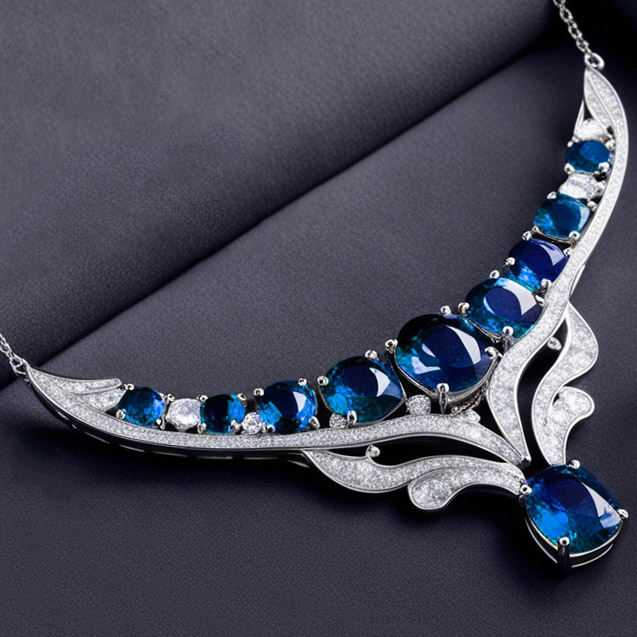Sapphire, the birthstone of September, is renowned for its mesmerising beauty. As one of the “Big Three” gemstones, alongside rubies and emeralds, sapphire has captivated the hearts of many with its vibrant hues and rich history. This precious gemstone is a symbol of wisdom and nobility. However, it also carries a mystical association with the planet Saturn, bringing in the bad with the good.
What is a Sapphire?
Sapphires belongs to the corundum family, which also includes rubies. If a corrundum is red, its a ruby. All remaining colours are sapphires. It is composed primarily of aluminum oxide (Al2O3). The crystal structure of sapphire is trigonal, meaning it has a hexagonal arrangement of atoms. Therefore, it ranks 9 on the Mohs scale, making it second only to diamonds in hardness. This makes it greatly suited to engagement rings or for everyday wear jewellery.
Heat treating sapphire is a commonly accepted treatment but fracture filling and infusing colour by lattice diffusion is also done. Please ask your jewellery before treatments before purchasing a stone.
Sources of Sapphire
Sapphires are found in various parts of the world, each location offering distinct characteristics. The most famous sources according to GIA include:
- Kashmir, India: Known for producing sapphires with a velvety blue hue, Kashmir sapphires are highly prized for their rarity and rich colour.
- Sri Lanka: Produces a whole host of various colours and the milkish sapphire can be heat treated to produce a blue
- Thailand – The Chantaburi provonce in Thailand is another important source of sapphires
- Myanmar (Burma): Burmese sapphires are renowned for their deep, intense blue shades can be found in the Mogok area.
- Madagascar and Australia are other places were you can find sapphires.

The Rainbow of Sapphire Colors
While sapphire is most commonly associated with its iconic blue shade, it actually comes in a spectrum of colours. These include:
- Blue: The classic and most sought-after hue, ranging from light to deep blue.
- Pink: Can be a dull soft pink to ruby like and bright
- Yellow: Known as Phukraj in Hindi and and Kanaga pushparagam in Tamil, the yellow sapphires is one of the navaratnas. It is associated with Guru (Planet Jupiter) and it furthers education, brings prosperity and domestic bliss.
- Green: Ranging from olive green to teal, Australian green sapphires are tantalising
- Purple: You can find both purple (reddish pinkish hue) along with a more blueish violets. You can find colour shifting sapphires that shifting violet to purple.
- White: Colourless sapphires are an affordable alternative to diamonds.
- Padparadscha: A rare and highly prized variety, this sapphire is a blend of pink and orange, reminiscent of a lotus flower.

Sapphire and Saturn
In Vedic astrology, sapphire is closely associated with the planet Saturn (Shani). Saturn is a powerful planet that governs discipline, responsibility, and karma. Wearing a blue sapphire (Neelam) is believed to harness Saturn’s energy, bringing structure, stability, and protection to the wearer. However, it is advised to consult with an astrologer before wearing a dark/deep blue sapphire, as Saturn’s influence can be both beneficial and challenging, depending on one’s birth chart. If you want to use sapphires in your jewellery without any astrological botherations then go for white sapphire.

Sapphire for September – Fashion Directions
While the name sapphire predominantly conjures up images of dark blue gemstone in the minds of many, it is not the direction that the fashion world is taking. Some directions in the recent times have to been to use colour shifting sapphires and fancy portrait cuts with striations.
If you are planning to buy or gift Sapphire for September, you can combine colours together. Use white along different tints and shades of blue in the same piece to create an ombre effect. Combine blue and green for a vibrant look that is on trend for 2025. Combine yellow, pink, and padparadscha and let the analogous colour harmony create an interesting piece of jewellery.
I hope you find it interesting
Cheers



What do you think?